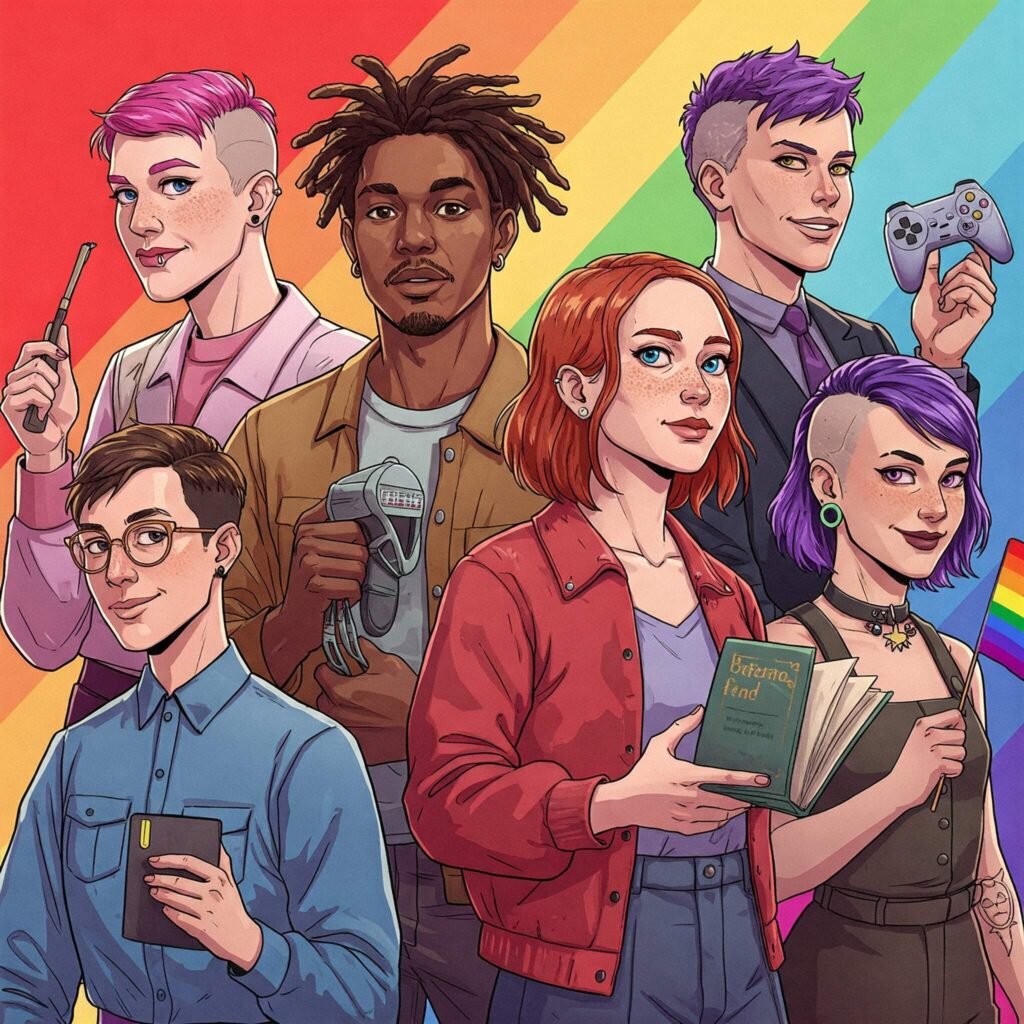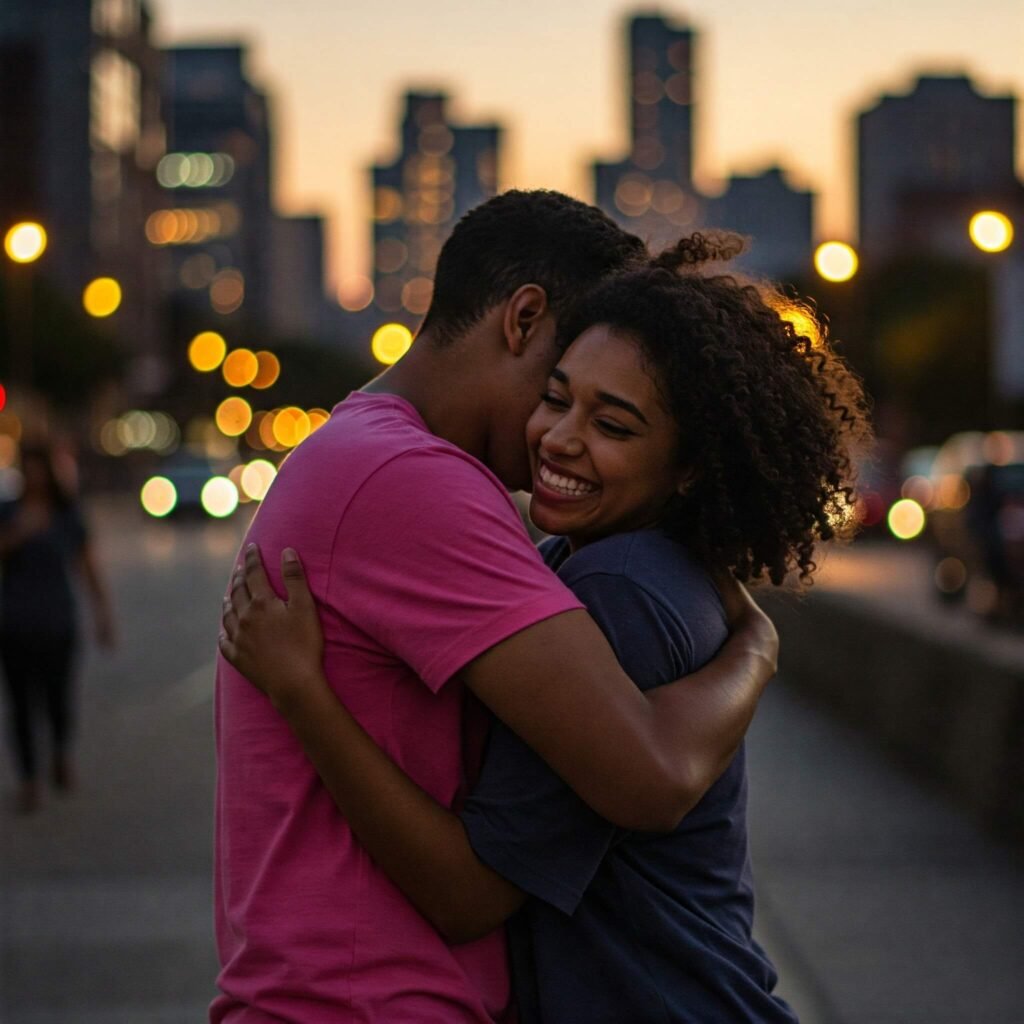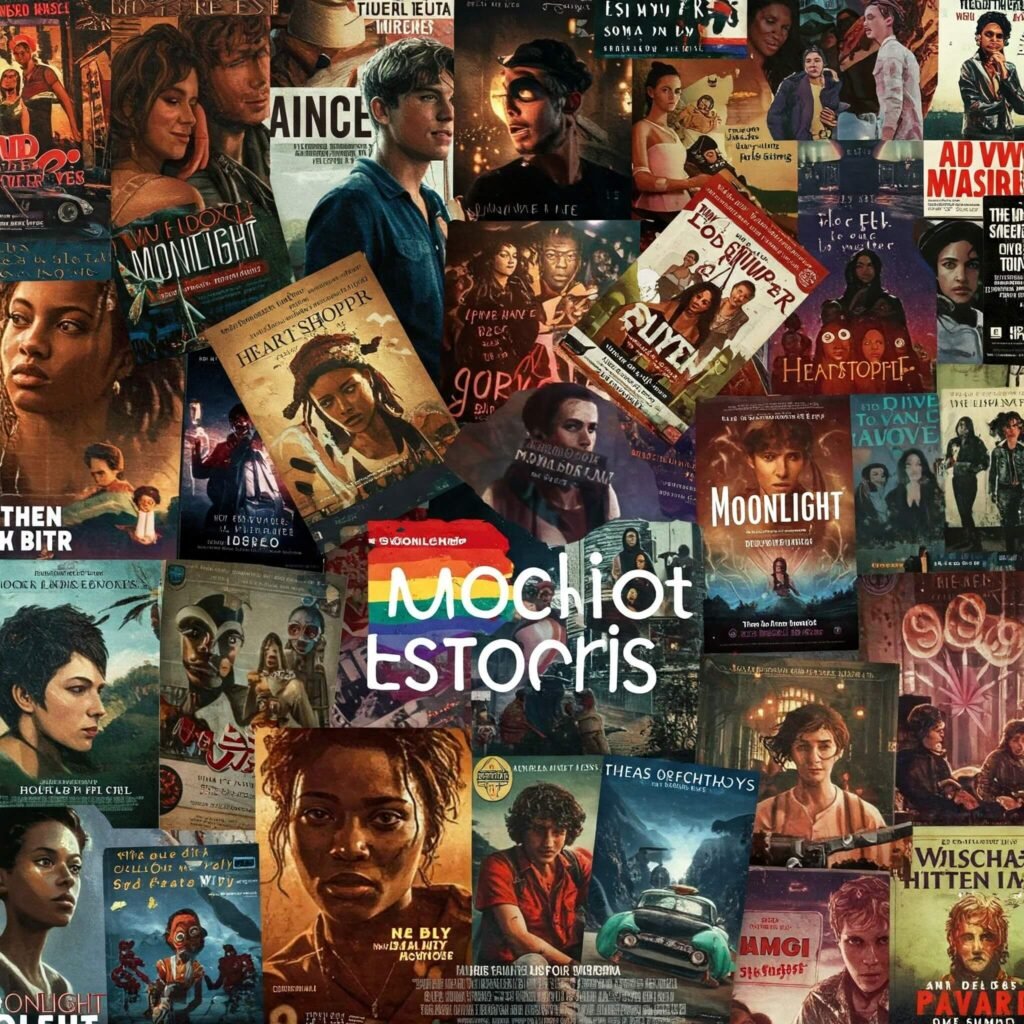LGBTQ+ storytelling in media is transforming how we view identity, love, and resilience. From films to TV shows, books to video games, queer narratives are breaking barriers, challenging stereotypes, and fostering empathy. These stories amplify marginalized voices, offering authentic representation that resonates with diverse audiences. In this blog, we explore why LGBTQ+ storytelling matters, its impact on culture, and how it shapes a more inclusive world.

Why LGBTQ+ Storytelling in Media Matters
LGBTQ+ storytelling in media isn’t just entertainment—it’s a cultural force. Authentic queer representation challenges societal norms, educates audiences, and validates the experiences of LGBTQ+ individuals. According to a 2023 GLAAD Media Report, 11.9% of primetime TV characters were LGBTQ+, a significant rise from previous years, yet gaps in representation persist, particularly for trans and nonbinary identities.
Building Empathy Through Authentic Narratives
Stories like those in Pose or Heartstopper showcase the power of authentic LGBTQ+ storytelling in media. These narratives humanize struggles and joys, fostering empathy among viewers. For example, Pose highlights the ballroom culture of 1980s New York, giving voice to trans women of color—a group often overlooked in mainstream media.
- Empathy in action: Stories help audiences connect with experiences outside their own.
- Breaking stereotypes: Authentic portrayals dismantle harmful tropes, like the “tragic queer” narrative.
- Cultural impact: Shows like Schitt’s Creek normalize queer relationships with humor and heart.

Breaking Barriers Through Diverse Representation
LGBTQ+ storytelling in media breaks barriers by showcasing diverse identities and experiences. From blockbuster films like Everything Everywhere All At Once to indie projects, queer stories challenge traditional narratives and expand what’s possible in storytelling.
Amplifying Underrepresented Voices
While progress has been made, certain groups—like queer people of color, trans individuals, and asexual characters—are still underrepresented. Projects like Moonlight and Disclosure spotlight these voices, proving that inclusive storytelling can resonate widely. For instance, Moonlight won the 2017 Oscar for Best Picture, showing that queer stories can achieve critical and commercial success.
- Trans representation: Disclosure (2020) explores trans portrayals in Hollywood, sparking vital conversations.
- Intersectionality: Stories like Vida highlight queer Latinx experiences, blending culture and identity.
- Global reach: International shows like Young Royals bring queer stories to global audiences.
Overcoming Industry Challenges
Despite progress, barriers remain. Some studios hesitate to greenlight queer-focused projects due to perceived market risks. Yet, data shows demand: a 2022 Nielsen study found that 67% of viewers want more inclusive media narratives. LGBTQ+ creators are pushing back, using platforms like YouTube and TikTok to share their stories directly.

The Impact of Queer Stories on Society
LGBTQ+ storytelling in media doesn’t just entertain—it shapes culture and drives social change. By normalizing queer identities, these stories reduce stigma and inspire acceptance.
Shaping Cultural Perceptions
Shows like Euphoria and films like Portrait of a Lady on Fire challenge viewers to rethink love, identity, and community. These stories create safe spaces for queer audiences and educate others, fostering a more inclusive society. For example, Heartstopper has been praised for its wholesome depiction of young queer love, resonating with Gen Z audiences.
Inspiring Action and Advocacy
Queer stories often spark real-world change. The documentary The Celluloid Closet (1995) inspired filmmakers to create more authentic representations, while modern shows like Legendary celebrate queer subcultures, encouraging advocacy for marginalized communities.
- Educational impact: Stories teach audiences about queer history and struggles.
- Community building: Fan communities around shows like Wynonna Earp foster connection.
- Policy influence: Media visibility can support advocacy for LGBTQ+ rights.
How to Support LGBTQ+ Storytelling in Media
Want to champion queer representation? Here are actionable ways to support LGBTQ+ storytelling in media:
- Consume diverse content: Watch films, read books, and play games with queer narratives.
- Amplify creators: Follow and share work by LGBTQ+ writers, directors, and artists.
- Advocate for inclusion: Support platforms and studios that prioritize diverse stories.
- Engage online: Join discussions on social media to boost visibility for queer media.
For more insights, check out GLAAD’s Media Resources or The Trevor Project’s Guide to Media Representation.
Conclusion: The Future of LGBTQ+ Storytelling
LGBTQ+ storytelling in media is a powerful tool for breaking barriers and building empathy. By amplifying diverse voices, challenging stereotypes, and fostering connection, these stories are reshaping the cultural landscape. As audiences, creators, and advocates, we can support this movement by celebrating and demanding inclusive narratives. The future of media is queer, diverse, and unapologetically authentic—let’s keep pushing for more.
Outbound links:





























